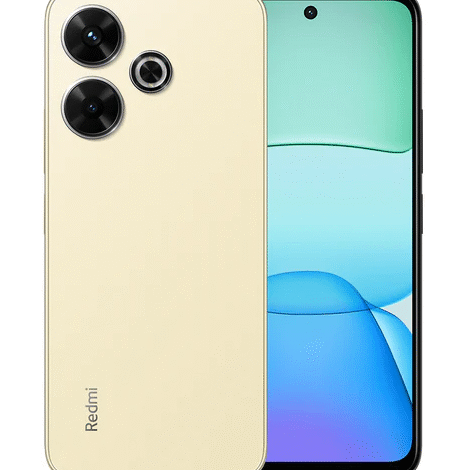Redmi 13: Budget Beast or Just Another Mid-Ranger?

When it comes to budget smartphones, Xiaomi’s Redmi series has consistently been a fan favorite. The latest entrant, the Redmi 13, continues this legacy with a focus on value, performance, and style. But in a market saturated with budget-friendly devices, does the Redmi 13 really stand out, or is it just another number in the lineup? Let’s take a deep dive.
A Fresh Design That Doesn’t Feel Budget
At first glance, the Redmi 13 doesn’t scream “budget phone”—and that’s a good thing. Xiaomi has made significant strides in recent years when it comes to design, and this model reflects that evolution beautifully.
The phone boasts a sleek, flat-edge design that feels surprisingly premium in the hand. Unlike older budget models that often relied on plastic builds with a cheap gloss finish, the Redmi 13 goes for a more refined aesthetic. The back panel, depending on the variant, offers a glossy or matte finish, with a subtle gradient that catches light in just the right way.
Even the camera module has seen a bit of a facelift. Rather than the bulky, clunky camera bumps we’re used to seeing in this price bracket, the Redmi 13 offers a clean, symmetrical layout that looks like it belongs on a much more expensive device. The color options—ranging from classic black to a vibrant sky blue—add some flair for those who like to make a statement.
In terms of dimensions, it’s fairly slim and lightweight, making it comfortable for one-handed use. Whether you’re snapping pics, scrolling Instagram, or watching videos, the Redmi 13 feels comfortable and solid—not something you always get with a phone under $200.
Performance That Punches Above Its Price
Now, let’s talk about what really matters: performance. The Redmi 13 ships with the MediaTek Helio G91 Ultra chipset, which might not sound super impressive on paper but actually holds up quite well in everyday use.
For your average tasks—messaging, web browsing, video streaming, social media—the phone runs buttery smooth. It handles multitasking without much fuss, thanks to 6GB or 8GB of RAM (depending on the variant), and MIUI is fairly well optimized to make sure background processes don’t bog the system down.
Gaming is where things get interesting. While this isn’t a hardcore gaming phone, casual games like Subway Surfers, Candy Crush, and even Call of Duty: Mobile run at playable settings. You’re not getting 60fps ultra-graphics, of course, but the frame drops are minimal, and thermals are well-controlled.
The internal storage is also pretty generous for the price. With options up to 128GB and support for microSD cards, you won’t be running out of space any time soon. The inclusion of UFS 2.2 storage also gives the Redmi 13 an edge in loading times and app responsiveness compared to phones with older eMMC storage.
A Display Made for Binge-Watching
One of the standout features of the Redmi 13 is its 6.79-inch FHD+ IPS LCD display. That’s a big screen, and it makes a noticeable difference whether you’re watching Netflix, scrolling TikTok, or reading articles (like this one).
The resolution is crisp enough to avoid pixelation, and while it’s not AMOLED, the colors are surprisingly vibrant. The display supports a 90Hz refresh rate, which is a game changer in this price bracket. Scrolling through apps and websites feels smoother, and animations are a bit more fluid. Once you get used to 90Hz, it’s hard to go back.
Brightness levels are decent too. You won’t struggle too much in direct sunlight, though you may find yourself cupping your screen on really sunny days. For indoor use and late-night doom-scrolling, there’s a built-in reading mode and blue light filter to reduce eye strain.
Bezels are slim for a phone at this price, with a small punch-hole cutout at the center for the selfie camera, giving the display a more modern look. Watching content feels immersive, and the audio, while not stereo, is loud and clear enough for most casual uses.
Cameras That Actually Impress (Sometimes)
Budget phones are not known for having stellar cameras, but Xiaomi has done some magic here. The 108MP main sensor is the headliner—and yes, it’s a real 108MP sensor, not just marketing fluff.
In well-lit conditions, the Redmi 13 takes sharp, detailed shots with decent dynamic range. Color reproduction is slightly boosted (as is common with Xiaomi’s image processing), but most users will appreciate the punchy, Instagram-ready results. Portrait mode works surprisingly well, too, offering a good edge detection with a natural-looking blur.
The 2MP macro sensor, on the other hand, is more of a filler. It’s there, and it works, but don’t expect breathtaking detail. Still, it’s fun to experiment with close-up shots now and then.
On the front, there’s a 13MP selfie camera, which does a fine job for video calls and social media. Beauty filters are a bit aggressive by default, but you can dial them back. Low-light performance is average, as expected. There’s no OIS, so night shots can be hit-or-miss, but with steady hands and the built-in night mode, you can get usable results.
Battery That Just Keeps Going
If there’s one thing Redmi phones are consistently great at, it’s battery life, and the Redmi 13 doesn’t disappoint. It packs a 5,030mAh battery, which is more than enough to get through a full day of moderate to heavy usage.
With regular use—think calls, messaging, YouTube, and casual gaming—you’ll likely end the day with 30-40% still left. That’s impressive in a world where some phones struggle to make it to dinner.
Charging is handled by a 33W fast charger, and yes, it’s included in the box (thank you, Xiaomi!). It takes the phone from 0 to 100% in about an hour and fifteen minutes, which is perfectly acceptable at this price.
Battery optimization features in MIUI are also well-tuned, ensuring that background apps don’t drain power unnecessarily. If you’re traveling or need even more life, there’s an ultra-battery saver mode that extends usage significantly while cutting down on non-essential functions.
Software: MIUI Still Has Its Quirks
The Redmi 13 runs on MIUI 14, based on Android 13 out of the box. MIUI has come a long way in terms of stability and performance, and this latest version is the most polished yet.
The interface is colorful and packed with features—maybe even too many for some users. You get themes, gesture controls, split-screen multitasking, floating windows, and a ton of customization options. If you like tweaking your setup, MIUI gives you all the tools.
That said, bloatware is still a minor annoyance. The phone comes with several pre-installed apps, though most of them can be uninstalled. Ads in system apps used to be a big complaint, but thankfully, Xiaomi has toned this down in recent versions.
Security updates are regular for the first couple of years, and while the Redmi 13 may not get the fastest Android OS upgrades, Xiaomi usually supports its devices decently for their price range.
Final Verdict: Should You Buy the Redmi 13?
If you’re looking for a budget-friendly smartphone that doesn’t skimp on modern features, the Redmi 13 is a strong contender. It combines sleek design, solid performance, a surprisingly good camera, and dependable battery life—all for a very competitive price.
Is it perfect? No. The macro camera is forgettable, MIUI still has room for improvement, and the lack of an AMOLED display might be a dealbreaker for some. But for most people looking for a phone under $200, the Redmi 13 delivers where it matters.
Verdict: Redmi 13 is not just another mid-ranger—it’s one of the best bang-for-your-buck phones of the year.



